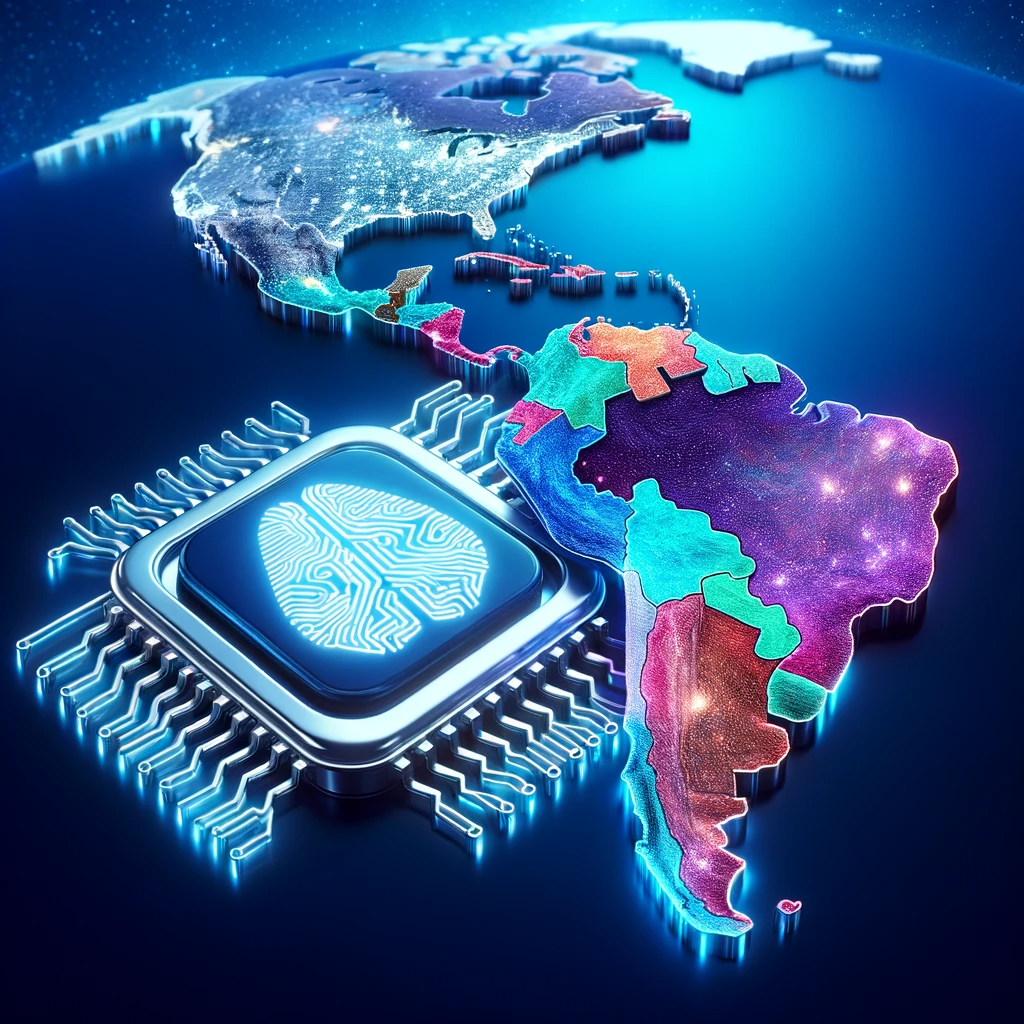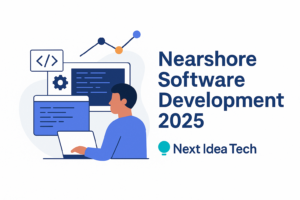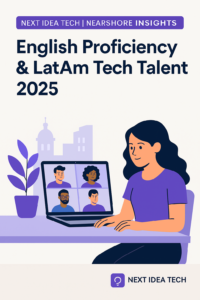Hiring nearshore AI developers can be a strategic move for businesses looking to accelerate their AI initiatives while maintaining a reasonable budget. Here’s a comprehensive guide on how to go about it:
Hire the best developers in Latin America. Get a free quote today!
Contact Us Today!Understanding Nearshore AI Development:
Nearshore Software Development refers to outsourcing AI development tasks to countries closer to your home location, such as Costa Rica or Mexico, from the US. This arrangement allows for better collaboration, faster project completion, and cost savings. Nearshore development can be particularly beneficial due to the time-zone compatibility, which facilitates better communication between the teams, and often, language and cultural similarities exist, making the collaboration smoother.
Benefits of Nearshore AI Development:
- Cost-Effectiveness: Nearshore hiring can save up to 60% in costs as compared to onshore development.
- Access to a Larger Talent Pool: Nearshoring expands the talent pool, providing access to skilled AI developers.
- Scalability: It allows you to scale your team up or down based on project requirements.
What does an AI Developer do?
An AI developer is tasked with building and deploying AI models to solve real-world problems. They work on model training and evaluation, using techniques like supervised, unsupervised, and reinforcement learning to create AI models, assess their performance, and enhance their accuracy and efficiency.
Post model development, they deploy these trained models into production environments, ensuring they are seamlessly integrated into applications or systems. Monitoring the performance of deployed models, troubleshooting issues, and optimizing them for real-world scenarios are among their key responsibilities. Their technical arsenal includes proficiency in languages like Python, R, or Java, essential for implementing algorithms, manipulating data, and constructing AI applications.
Latest AI Trends
The latest trends in AI as of 2023 encompass a variety of developments aimed at making AI more accessible, understandable, and collaborative. They include:
- Conversational AI: Enhancing customer service through automated, complex, and rule-based tasks handled by chatbots.
- Predictive Analytics: Helping businesses optimize operations by predicting events like machine failures.
- AI Democratization (Low Code, No Code): Enabling more businesses to utilize AI through simplified programming methods.
- Ethical and Explainable AI: Working towards making AI algorithms understandable and free from bias.
- Multi-Modal AI: Creating more holistic AI systems by training with multiple types of data.
- Digital Twins: Virtual replicas of physical objects or processes to optimize real-world operations.
- Collaboration of Humans and Robots (CoBots): Enhancing productivity by having robots work alongside humans.
- AI Security Trends: Utilizing AI to enhance cybersecurity measures like facial recognition for biometric authentication1.
How to hire Nearshore AI Developers
Interviewing Nearshore AI Developers:
When interviewing nearshore AI developers, it’s imperative to align the interview process with the specific needs of your project and the expertise required for successful execution. Here’s a structured approach to vetting and interviewing a nearshore AI developer:
- Technical Qualifications:
- Experience: Look for candidates with a substantial amount of experience, preferably 4+ years, in implementing business-critical product features using Python, working with NLP, Deep Neural Networks, and contributing to the architecture and design of resilient, large-scale distributed systems.
- Technological Proficiency: Familiarity with frameworks and technologies such as Django, PyTorch, Tensorflow, Caffe, and others is crucial. Inquire about their experience with these technologies and their ability to adapt to new frameworks.
- Educational Background: A strong engineering background with a Bachelor’s degree in EECS, Mathematics, or Physics is desirable.
- Additional Skills: Understanding of XML and JSON, strong analytical, troubleshooting skills, and experience with Microservices architecture are added advantages.
- Practical Evaluations:
- Problem-Solving: Pose real-world problems related to fine-tuning custom LLM models on enterprise data, using advanced NLP techniques to extract key information, or building core features such as LangChain, Agents, Knowledge Graphs, and Real-Time Audits. Evaluate their approach to solving these problems and their ability to deliver workable solutions.
- Project Management: Assess their experience in designing and implementing a solid, workable Microservices architecture, and their ability to gain insights from data by applying mathematical principles.
- Responsibility-Based Questions:
- Contributions to Open Source: Ask about their contributions to the open-source community and how they stay updated with the latest developments in AI/ML technologies.
- Experimentation: Inquire about their experience with experimenting with the latest hardware accelerators such as GPUs and HSMs, and how they ensure the solutions are validated and tested for real-world environments.
- Communication & Collaboration:
- Language Proficiency: Ensure they have fluency in English for effective communication, especially important for nearshore developers.
- Remote Work Adaptability: As they might be working remotely, assess their familiarity with collaboration tools and their experience in remote team environments.
- Coding Assessment:
- Programming Skills: Conduct coding assessments to evaluate their grasp on Java, Python, deep learning, C++ programming, and other relevant technologies.
Nearshore AI Developer Interview Questions & Answers
| Question Type | Question | Acceptable Answer |
|---|---|---|
| Technical Proficiency | What is your experience with NLP and Deep Neural Networks? | 4+ years, with examples of past projects. |
| Algorithm Understanding | Explain the difference between supervised and unsupervised learning. | Detailed explanation with examples. |
| Practical Application | How would you approach a real-world machine learning problem? | Step-by-step approach, mentioning data preprocessing, model selection, training, evaluation, and deployment. |
| Framework Familiarity | Have you worked with PyTorch or TensorFlow? Which do you prefer? | Yes, with rationale for preference. |
| Problem-Solving | How do you handle missing data in a dataset? | Various techniques like imputation, deletion, etc. |
| Project Management | Describe your experience with Agile methodology. | Examples of Agile projects managed. |
| Communication | How do you explain complex AI concepts to non-technical stakeholders? | Simplified explanations, visual aids, etc. |
| Industry Knowledge | Are you familiar with the latest trends in AI like Conversational AI, Predictive Analytics, etc.? | Yes, with examples of how they can be applied in projects. |
| Coding Skills | Can you provide an example of a challenging coding problem you solved? | Detailed explanation of the problem and solution. |
| Team Collaboration | How do you handle conflicts in a team setting? | Examples of conflict resolution and communication skills. |
Where are Nearshore AI Developers Located?
The presence of AI developers in LATAM (Latin America) is progressively growing with countries like Brazil, Mexico, and Argentina becoming notable hubs.
The advancement in AI technology has seen developers in these regions adopt AI solutions, like ChatGPT among others.
The region’s developing tech ecosystem attracts global tech giants to open development centers, enhancing the local AI development landscape. As the demand for AI solutions rises, LATAM continues to be a significant player, with its AI developers contributing to global tech advancements.
Do Nearshore AI Developers Speak English?
Yes, many nearshore AI developers do speak English, especially in countries close to the United States where English is often taught as a second language from an early age. The level of English proficiency may vary, but in the tech industry, English is often the standard language for communication, documentation, and code writing.
Nearshore development agencies, like Next Idea Tech have English-speaking staff to cater to clients from English-speaking countries. We ensure that communication barriers are significantly reduced, making collaboration with nearshore AI developers more effective and straightforward.

Navigating the terrain of AI development requires a blend of staying updated with the latest trends and having the right talent on board. Partnering with a comprehensive agency like Next Idea Tech streamlines this journey significantly.
Our all-encompassing services cover sourcing, vetting, and hiring, ensuring you get pre-vetted AI developers aptly suited for your projects. By delegating the hiring process to Next Idea Tech, you not only save valuable time but also position yourself favorably in leveraging the vast potential that AI holds.
If you’re on the lookout for proficient AI developers, reach out to Next Idea Tech today!




